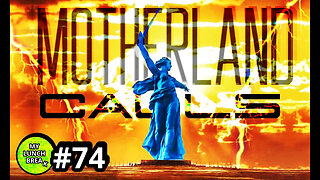Romania history, as they were the ancestors of the modern
Romania, located in southeastern Europe, has a rich and complex history that spans thousands of years. Here is an overview of Romania's history:
Ancient Times:
The territory of modern-day Romania was inhabited by various ancient peoples, including the Dacians and the Getae. The Dacians are particularly significant in Romanian history, as they were the ancestors of the modern Romanian people.
Roman Conquest:
In 106 AD, the Roman Empire conquered the Dacian Kingdom and established the province of Dacia. This period brought significant Roman influence to the region and contributed to the development of Latin-based Romance languages in the area.
Migration Period:
In the 3rd century AD, as the Roman Empire declined, the region came under the influence of various migrating tribes, including Goths, Huns, and Slavs.
Medieval Period:
In the 9th century, the territory that is now Romania began to emerge as a distinct region in the context of the medieval states of Transylvania, Wallachia, and Moldavia.
The Hungarian Kingdom exerted control over Transylvania, while Wallachia and Moldavia remained more autonomous principalities. These regions had their own rulers and developed their unique cultural and political identities.
Ottoman Rule:
In the late 14th and early 15th centuries, the Ottoman Empire expanded into southeastern Europe. Wallachia and Moldavia both became vassal states of the Ottomans, leading to centuries of Ottoman influence and control in the region.
Phanariote Domination:
During the 18th century, the rulers of Wallachia and Moldavia were often chosen from the Greek Phanariote nobility, who were appointed by the Ottomans. This period is known for corruption and economic exploitation.
Independence and Unification:
The 19th century marked a period of growing nationalism and desire for independence in the Romanian principalities. The Greek War of Independence and the Crimean War indirectly contributed to Romanian aspirations for autonomy.
In 1859, Wallachia and Moldavia elected the same ruler, Alexandru Ioan Cuza, which was a significant step toward unification. In 1862, he became the ruler of both principalities.
In 1877-1878, Romania fought alongside Russia against the Ottoman Empire in the Russo-Turkish War. As a result, Romania gained recognition of its independence and territorial expansion.
Kingdom of Romania:
In 1881, the principality of Romania officially became the Kingdom of Romania, with Carol I as its first monarch.
World War I and Greater Romania:
Romania entered World War I on the side of the Allies in 1916. After the war, Romania gained significant territory and became known as "Greater Romania."
Interwar Period:
Romania enjoyed a period of relative stability and economic growth during the interwar years.
World War II and Communist Rule:
Romania initially aligned itself with Nazi Germany but later switched sides to join the Allies. After World War II, Romania came under Soviet influence, leading to the establishment of a communist government under Gheorghe Gheorghiu-Dej.
The Communist Era and Revolution:
Romania was ruled by the repressive regime of Nicolae Ceaușescu from 1965 to 1989. The Romanian Revolution in December 1989 led to the overthrow of the Ceaușescu regime.
Post-Communist Romania:
After the revolution, Romania transitioned to a democratic system and market economy. The country faced various political and economic challenges as it moved away from its communist past.
European Union and NATO:
Romania joined NATO in 2004 and the European Union in 2007, solidifying its place in Western institutions.
Today, Romania is a democratic republic and a member of several international organizations. Its history is marked by a diverse cultural heritage and a long struggle for independence and self-determination
-
 16:43
16:43
TudorDixon
21 hours agoHow was Harrison Butker Wrong? | The Tudor Dixon Podcast
5754 -
 2:39:22
2:39:22
Drunk3PO
16 hours agoStar Wars, Achromatic Chronicles Green, & More | Drunk3po Live
610 -
 7:11
7:11
Film Threat
21 hours agoTHE STRANGERS: CHAPTER 1 | Film Threat Reviews
4853 -
 25:22
25:22
MYLUNCHBREAK CHANNEL PAGE
15 hours agoTartaria, Russia & The Old World?
3.61K19 -
 15:08
15:08
justintech
19 hours agoCorsair Vengeance i8200 Review - 14900K + 4090
42 -
 11:31
11:31
ryanhoguepassiveincome
13 hours agoTOP 5 NICHES 🔥 Print on Demand Niche Research # 207 — (5/12/2024)
34 -
 51:31
51:31
Science & Futurism with Isaac Arthur
21 hours agoAutomated Justice
7861 -
 28:23
28:23
TampaAerialMedia
20 hours agoMiami Travel Guide - Downtown, Key Biscayne, Coral Gables
111 -
 8:05
8:05
Ethical Preparedness
14 hours agoEASY Homemade Allergy Medicine - Medical Prepping for SHTF - Natural Medicine
51 -
 20:48
20:48
JoBlo Originals
1 day agoWhat Happened to WES STUDI?
9.2K5